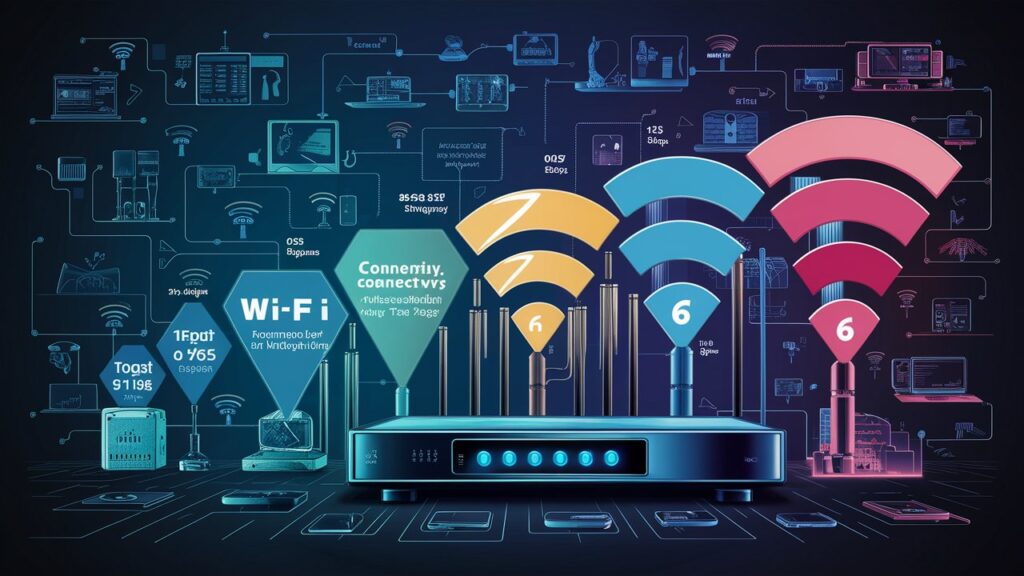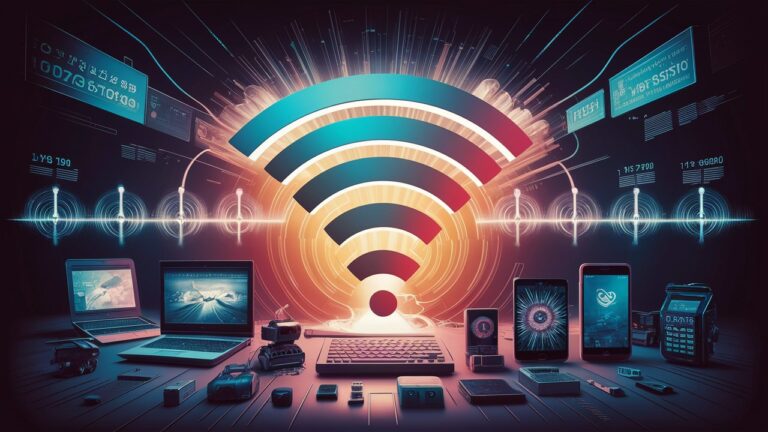Introduction
Wireless Fidelity, commonly known as Wi-Fi, has transformed how we interact with technology, enabling seamless internet access across homes, offices, and public spaces. Since its inception, Wi-Fi has evolved from a niche technology to a global necessity, powering everything from smartphones to smart cities. This article explores the history, technical foundations, societal impact, and future trends of Wi-Fi, addressing common questions and challenges. By understanding its role in modern connectivity, we can appreciate its significance and anticipate its next innovations.
1. The History of Wi-Fi: From Concept to Global Connectivity
The origins of Wi-Fi date back to the 1980s, when the Federal Communications Commission (FCC) opened radio bands for unlicensed use, paving the way for wireless experimentation. In 1997, the IEEE 802.11 standard was introduced, establishing protocols for wireless local area networks (WLANs). The term “Wi-Fi” was coined in 1999 by the Wi-Fi Alliance, a consortium of companies dedicated to promoting interoperability. Early Wi-Fi versions, like 802.11b, offered speeds up to 11 Mbps, but advancements such as 802.11n (2009) and Wi-Fi 6 (2019) have since boosted speeds to multi-gigabit levels. Today, Wi-Fi is embedded in over 20 billion devices globally, reflecting its indispensable role in daily life.
2. How Wi-Fi Works: The Science Behind Wireless Communication
Wi-Fi operates by transmitting data via radio waves in the 2.4 GHz and 5 GHz frequency bands. A wireless router acts as a hub, converting internet signals from a modem into radio waves, which devices like laptops and smartphones decode. Key technologies include OFDMA (Orthogonal Frequency-Division Multiple Access), which improves efficiency in crowded networks, and MIMO (Multiple-Input Multiple-Output), enabling simultaneous data streams. Encryption protocols like WPA3 ensure secure transmissions, while beamforming directs signals toward connected devices for stronger connections. Understanding these mechanisms highlights the balance of speed, range, and security that defines modern Wi-Fi.
3. The Benefits of Wi-Fi: Enabling Mobility and Innovation
Wi-Fi’s greatest strength lies in its ability to untether users from wired connections, fostering mobility in workplaces, education, and entertainment. Remote work and e-learning surged during the COVID-19 pandemic, relying heavily on home Wi-Fi networks. Smart homes leverage Wi-Fi to connect IoT devices like thermostats and security cameras, while industries use it for automation and real-time data analysis. Public Wi-Fi hotspots in cafes, airports, and cities further democratize internet access, bridging digital divides. These applications underscore Wi-Fi’s role as a catalyst for productivity, creativity, and inclusivity.
4. Challenges and Limitations of Wi-Fi: Security, Interference, and Coverage
Despite its advantages, Wi-Fi faces challenges. Security vulnerabilities, such as weak passwords or outdated encryption, expose networks to hacking. Signal interference from neighboring networks or household appliances (e.g., microwaves) can degrade performance, especially in the congested 2.4 GHz band. Physical obstructions like walls limit coverage, necessitating range extenders or mesh systems. Additionally, rural areas often lack infrastructure for high-speed Wi-Fi, exacerbating inequality. Addressing these issues requires advancements in encryption, spectrum management, and policy initiatives to expand access.

5. The Future of Wi-Fi: Emerging Technologies and Trends
Next-generation Wi-Fi standards aim to revolutionize connectivity. Wi-Fi 6E, for instance, utilizes the 6 GHz band for reduced congestion and faster speeds, while Wi-Fi 7 (anticipated by 2024) promises latency below 5 milliseconds, ideal for augmented reality and autonomous systems. Integration with 5G networks will enable seamless handoffs between cellular and Wi-Fi, enhancing reliability. Innovations like Li-Fi (light-based data transmission) could complement Wi-Fi in dense environments. As AI-driven network optimization becomes mainstream, Wi-Fi will evolve into a smarter, more adaptive ecosystem.
Conclusion
Wi-Fi has come a long way from its experimental roots, reshaping communication, commerce, and culture. While challenges like security and accessibility persist, ongoing advancements promise faster, more reliable, and inclusive networks. As we embrace technologies like Wi-Fi 6E and IoT, the potential for innovation is limitless. By staying informed and proactive, users and policymakers can ensure Wi-Fi continues to empower a connected world.
Frequently Asked Questions (FAQs)
Q1: What does “Wi-Fi” stand for?
A: Contrary to popular belief, Wi-Fi doesn’t stand for “Wireless Fidelity.” It’s a brand name created by the Wi-Fi Alliance to market IEEE 802.11 technology.
Q2: How is Wi-Fi different from the internet?
A: Wi-Fi is a wireless method to connect devices to a local network, while the internet is a global network of servers and data accessed via that connection.
Q3: Can Wi-Fi signals harm human health?
A: Studies show Wi-Fi’s low-power radio waves pose no proven health risks, as they operate well below harmful radiation levels.
Q4: What’s the difference between Wi-Fi 5 and Wi-Fi 6?
A: Wi-Fi 6 offers faster speeds, lower latency, and better performance in crowded areas compared to Wi-Fi 5 (802.11ac).
Q5: How can I improve my Wi-Fi signal at home?
A: Position your router centrally, update firmware, use a mesh system, and avoid physical obstructions or interference from other devices.
This comprehensive guide equips readers with a deep understanding of Wi-Fi’s past, present, and future, empowering them to navigate its complexities and harness its full potential.
